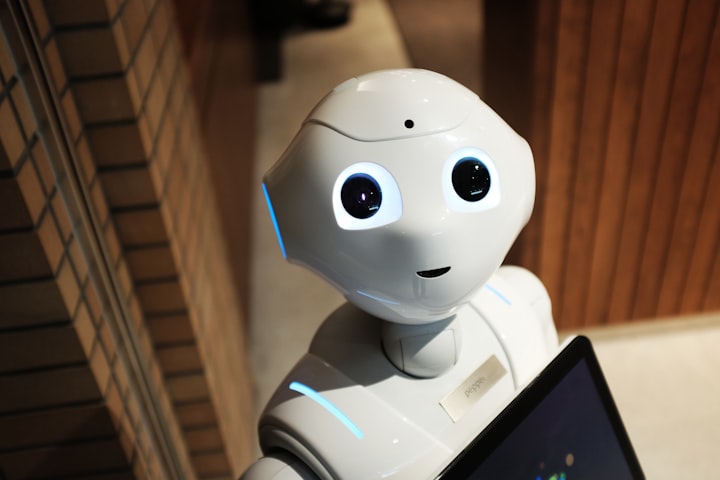Reshaping Language Boundaries: Neural Machine Translation Unveiled
The Future of Linguistics: How Neural Machine Translation is Reshaping Language Boundaries

Imagine a world where language barriers cease to exist, where people from different cultures and backgrounds can effortlessly communicate and understand each other. This vision is becoming a reality thanks to the rise of neural machine translation and technological advancement. Let's explore the fascinating realm of neural machine translation and its profound impact on language boundaries.
Understanding Neural Machine Translation
Neural machine translation (NMT) is a cutting-edge approach to translation that leverages the power of machine learning algorithms and neural networks. Unlike traditional methods that heavily rely on rule-based systems or statistical models, NMT uses artificial intelligence to understand and generate translations in a more human-like manner.
Evolution of Machine Translation Technologies
Machine translation has come a long way since the 1950s. The discipline has advanced significantly from early rule-based systems that followed tight language rules to statistical models that rely on vast multilingual texts. The introduction of neural networks and deep learning revolutionized machine translation, opening the way for the creation of NMT.
Neural Machine Translation vs. Traditional Methods
The difference between the Neural Machine Translation (NMT) and traditional methods lies in their mechanics and performance. NMT, with its neural network-based approach, has surpassed standard methods in terms of translation quality. NMT systems can learn from extensive datasets and capture the nuances of language, resulting in more accurate and fluent translations.
In contrast, traditional methods, whether rule-based or statistical, have limitations in handling complex sentence structures and context-specific translations. NMT's ability to adapt translations to specific contexts and understand idiomatic expressions gives it a clear advantage over traditional methods. The shift from rule-based or statistical approaches to data-driven neural networks has marked a significant leap forward in machine translation capabilities.
Role of Machine Learning in Translation
Machine learning plays a pivotal role in the development of NMT systems. By training neural networks on vast amounts of bilingual data, these models can learn patterns and structures within languages, allowing them to generate high-quality translations. The iterative nature of machine learning enables these systems that continuously improve and refine their translation capabilities over time.
Benefits and Challenges of Neural Machine Translation
Neural machine translation brings forth numerous benefits. Firstly, it offers faster translation speeds, allowing for more efficient communication in multilingual settings. Additionally, NMT systems excel at capturing the nuances and context of languages, resulting in more accurate translations. However, challenges such as domain-specific translations, rare language pairs, and preserving cultural nuances persist, requiring ongoing research and development.
Improving Translation Quality and Accuracy
One of the primary goals of NMT is to enhance translation quality and accuracy. Through continuous training on diverse and high-quality data, NMT models can better understand the intricacies of different languages, resulting in more precise translations. Additionally, using attention mechanisms in NMT allows the model to focus on relevant parts of the source text, further improving translation quality.
Multilingual Translation and Language Diversity
Due to its ability to handle several language pairs simultaneously, NMT has made critical advances in multilingual translation. By preserving and promoting linguistic diversity, NMT fosters inclusivity and cultural exchange on a global scale.
Addressing Cultural and Contextual Nuances in Translation
The translation is not solely about word-for-word substitution; it encompasses the cultural and contextual nuances embedded within languages. NMT systems capture these subtleties, resulting in translations that preserve the original meaning while adapting to the target language's cultural context, improving effective communication across cultures and minimizing misinterpretations.
Ethical Considerations in Neural Machine Translation
As with any technological advancement, there are ethical considerations surrounding NMT. Bias in translations, potential loss of human translation jobs, and reliance on large amounts of data are areas that require careful attention. Developing transparent and accountable NMT systems are crucial to address these concerns and ensure fairness and inclusivity in translation practices.
Data Privacy and Security in Neural Machine Translation
The extensive utilization of Neural Machine Translation (NMT) requires collecting and storing an immense volume of data for a domain by training the dataset. Data privacy and security are paramount in this context.
Implementing secured measurements to protect sensitive information while ensuring compliance with data protection regulations is a must. Striking a balance between access to data for training purposes and safeguarding user privacy is critical for the responsible use of NMT.
Revolutionizing Language Education and Teaching
NMT has the potential to revolutionize language education and teaching methodologies. With its ability to generate accurate and contextually appropriate translations, NMT systems can provide learners with real-time feedback and personalized language learning experiences. That enhances language acquisition and fosters a deeper understanding of different cultures.
Enabling Personalized Language Learning Experiences
Personalization is a crucial aspect of effective language learning. NMT systems can adapt to individual learners' needs, offering tailored translations and exercises based on their proficiency levels and learning goals. By providing targeted feedback and content, NMT empowers learners to improve their language skills at their own pace and in their preferred learning style.
Augmented Translation Tools in Language Classrooms
NMT systems can assist teachers and students in various ways, such as providing instant translations during lessons, facilitating cross-lingual communication, and enabling collaborative translation projects.
Incorporating augmented translation tools into language classrooms can significantly enhance the learning experience. Promoting active engagement and creating an immersive language-learning environment.
Bridging Language Gaps in Global Education
Language barriers often hinder access to education on a global scale. NMT has the potential to bridge these gaps by enabling the seamless translation of educational resources and facilitating communication between teachers and students who speak different languages.
Empowering Language Enthusiasts and Learners
NMT systems have opened up new avenues for language enthusiasts and learners. User-friendly translation apps and services equipped with NMT capabilities allow individuals to translate texts, understand foreign content, and engage with different cultures effortlessly. These tools empower language enthusiasts to explore new languages and bridge linguistic gaps in their personal and professional lives.
Accessible and User-Friendly Translation Apps and Services
The rise of NMT has led to the development of accessible and user-friendly translation apps and services. These platforms utilize the power of NMT to provide seamless translation experiences for users. Whether translating signs in a foreign country or understanding foreign texts online, these apps and services make language barriers a thing of the past.
Language Learning through Translation Technology
Translation technology, powered by NMT, can be a valuable tool for language learning. Learners can enhance their language skills, vocabulary, and cultural understanding by engaging in translation exercises.
Translating texts from their native language to the target language and vice versa helps learners develop a deep appreciation for the complexities of language and expands their linguistic horizons.
Immersive Language Experiences with Neural Machine Translation
NMT opens up possibilities for immersive language experiences. Language learners can use NMT-equipped devices to interact with foreign environments, translating street signs, menus, or conversations in real-time. This immersive method enhances language acquisition by presenting learners with actual language situations and real-world applications.
Transforming the Translation and Interpretation Industry
With the introduction of NMT, the translation and interpretation sector has experienced tremendous change. Translation agencies and professionals now leverage NMT systems to improve productivity and accuracy. NMT acts as a powerful tool, assisting human translators in handling large volumes of text and enabling them to focus on more creative and context-specific aspects of translation.
Enhanced Productivity and Efficiency in Translation Workflow
NMT systems have streamlined translation workflows, resulting in enhanced productivity and efficiency. By automating the initial translation process, NMT allows human translators to work more effectively, focusing on post-editing and quality assurance. This synergy between human expertise and NMT technology ensures high-quality translations delivered in a shorter time frame.
Future of Human Translators in an Automated World
As NMT continues to advance, concerns about the future of human translators arise. While NMT systems excel at generating translations, human translators bring invaluable skills such as cultural sensitivity, creative adaptation, and domain expertise. In an automated world, the role of human translators may evolve, focusing more on post-editing, quality assurance, and maintaining the human touch in translation.
Conclusion
Neural machine translation is revolutionizing the world of linguistics and reshaping language boundaries. With its ability to generate accurate and contextually appropriate translations, NMT bridges the gap between cultures, fosters inclusive communication, and enhances language education.





Comments
There are no comments for this story
Be the first to respond and start the conversation.